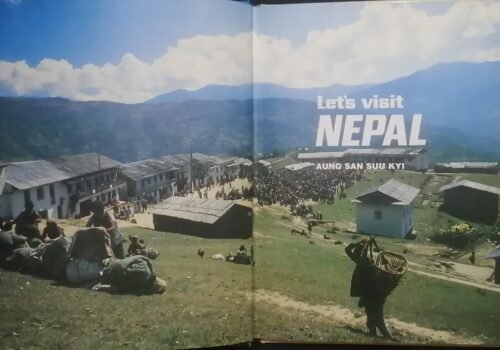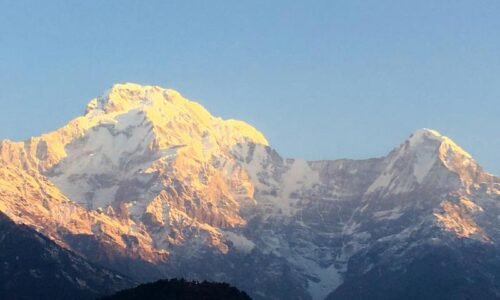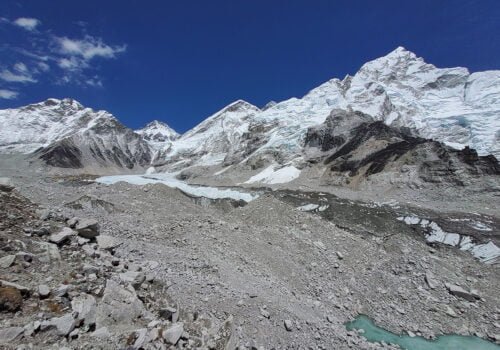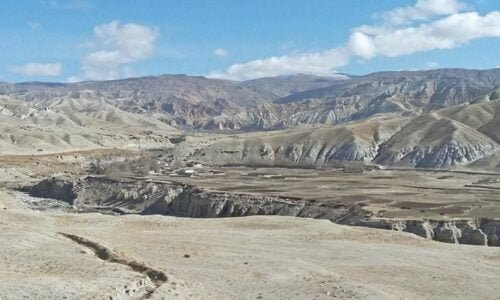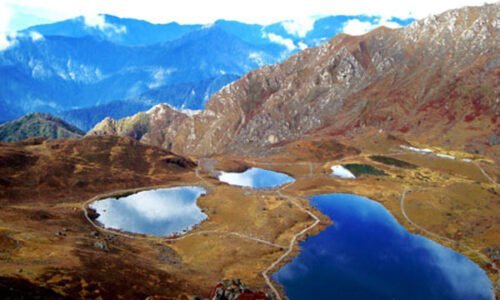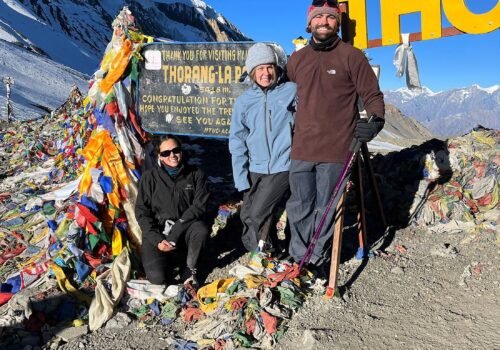Ultimate Guide to Everest Base Camp Trek
7 Sep 2023 8 min to read
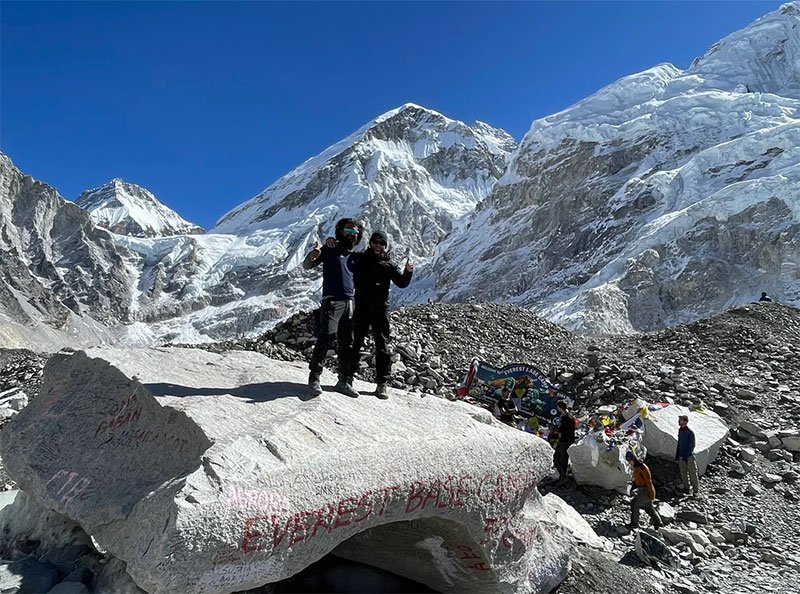
Overview
Everest Base Camp Trek is a dream destination for many trek enthusiasts worldwide. A trek to Everest Base Camp is challenging but full of adventure. One should not miss this once-in-a-lifetime experience. Hence, if you are planning for the Everest Base Camp Trek, here is the ‘Ultimate Guide to Everest Base Camp Trek.’ Nestled in the lap of beautiful nature and surrounded by towering peaks, including the World’s Highest, Mt. Everest, Everest Base Camp is the ultimate destination.
From the fascinating, vibrant Namche Bazaar to the beautiful Sherpa villages, Everest Base Camp’s trek is abundant with varieties. Traversing colossal suspension bridges and adoring the panoramic mountain vistas is an absolute delight. Immerse in the local Sherpa culture and admire their warm hospitality. Witness the panoramic views of Mt. Everest, Nuptse, Pumori, Lhotse, and Ama Dablam up close to the Kalapatthar.
Highlights
- Breathtaking views of snow-capped peaks, glaciers, and mountain villages
- Major attractions: The Lhotse-Nuptse Wall, Ama Dablam, Kantega, and Everest Base Camp itself
- Hike to the beautiful Khumjung Village
- Explore the Largest Tengboche Monastery and Oldest Pangboche Monastery
- Stunning panoramic mountain views from the Kalapatthar
- Close-up views of the World’s Highest Mountain Everest (8848.86m) and its surroundings
- Local Sherpa culture, traditions, and their lifestyle
Facilities during the Everest Base Camp Trek
Accommodation
Teahouses or lodges owned by locals are the means of accommodation. The teahouses are basic but clean and comfortable. Teahouses provide beds, quilts, and pillows, and at some teahouses, there are attached bathrooms. In the higher regions, the washroom is outside the teahouse, and during peak season, room-sharing must be done. So, it is best to book in advance for accommodation during peak seasons. There is no charging outlet inside the rooms. An additional charge is required for services like Wi-Fi, laundry, charging electronics, and showers.
Meal
The full-board meals are provided during the EBC Trek. From local Nepali dishes to continental varieties, all sorts of meals are available on the EBC Trek. Dal-Bhat is the most popular and energy-giving meal during the trek. Besides Dal Bhat, pancake, pizza, thukpa, Sherpa stew, porridge, omelet, mo: mo, hot ginger tea, coffee, and bakery items at Namche, etc., are available.
Drinking water
The natural spring water from the Himalayas, tap water, bottled water, and boiled water at teahouses are drinking water options in the EBC Trek. You can buy bottled water costing USD 1-2 or use boiled water, paying extra at teahouses for drinking. Carry a water bottle for convenience as well as to minimize plastic pollution. You can directly drink tap water or natural spring water, but use a water purifying solution to prevent waterborne diseases.

Best Time for Everest Base Camp Trek
Among the four main seasons, Spring (Mar-May), Monsoon (Jun-Aug), Autumn (Sep-Nov), and Winter (Dec-Feb), Spring and Autumn are considered best for the Everest Base Camp Trek.
The blossoming flowers in Spring, lush greenery landscapes, pleasant and stable weather, moderate temperature, and panoramic mountain vistas make it ideal for the EBC Trek.
The peaceful trail, stunning vistas, lush greenery, stable weather, pleasant temperature, and phenomenal views of snow-capped peaks, including Everest, make Autumn another favorable season for the EBC Trek.
The monsoon and Winter Seasons are the least favorable, and only dare to trek by adventurous trekkers for a thrilling experience. Expect unpredictable weather and unstable temperatures during both seasons. Constant rain during monsoons makes it difficult to walk on the trail. The cold weather, with a drop in temperature during winter, can be challenging for many trekkers, especially in the higher regions.
Trekking Permits
For Everest Base Camp Trek, the compulsory trekking permits are:
a. Khumbu Rural Municipality Permit
Foreigners- NPR 2000
SAARC- NPR 1000
b. Sagarmatha National Park (SNP)
Foreigners- NPR 3000
SAARC- NPR 1500
Trek Route for Everest Base Camp Trek
There are two alternative trek routes to Everest Base Camp: Flight and Roadways.
Flight Route: Take a 30-minute, exciting flight from Kathmandu to Lukla and commence the trek.
Trek Route:
Lukla-Phakding-Namche-Tengboche-Dingboche-Lobuche-Gorakshep-EverestBaseCamp-Gorakshep-Kalapatthar-Pheriche-Tengboche-Namche-Lukla
2.Roadways Route: Either from Jiri or Salleri in a public vehicle/private vehicle takes about 9-10 hours depending on the traffic and road conditions.
Jiri Trek Route:
Bhandara-Sete-Junbesi-Nunthala-Bupsa-Paiya-Phakding-Namche-Tengboche-Dingboche-Lobuche-Gorakshep-EverestBaseCamp-Gorakshep-Kalapatthar-Pheriche-Tengboche-Namche-Lukla
Salleri Trek Route:
KhariKhola-Paiya-Phakding-Namche-Tengboche-Dingboche-Lobuche-Gorakshep-EverestBaseCamp-Gorakshep-Kalapatthar-Pheriche-Tengboche-Monjo-Lukla-KhariKhola
How difficult is the Everest Base Camp Trek?
Many consider the Everest Base Camp trek as a moderate to strenuous-level trek. The maximum elevation during the EBC Trek is 5644.5 m (Kalapatthar). In the mountains, altitude sickness is normal. Besides this, other factors like rugged trails, steep ascends, descends, and long hours of walking in a day add difficulty to trekkers. Despite all these difficulties, with sheer dedication, full preparation, and maintaining good physical fitness Everest Base Camp Trek is physically possible.
Altitude Sickness in EBC Trek
Altitude Sickness is common as the elevation plays a vital role during the EBC Trek. The trekkers gain a maximum elevation of 5644.5 m at Kalapatthar, followed by 5364 m at Everest Base Camp. Namche and Dingboche are our acclimatization stops. To prevent altitude sickness, acclimatization rest is mandatory. Also, we suggest following the guide’s instructions to prevent altitude sickness.
Symptoms and Preventions for Altitude Sickness
Some common symptoms of Altitude Sickness are:
Headache, nausea, dizziness, uneasiness, appetite, and sleep loss, and on extreme, some can experience unconsciousness and hallucination.
Preventions for Altitude Sickness are:
- Take an acclimatization rest
- Inform the guide
- Climb slowly and gradually
- Keep yourself Hydrated
- Avoid alcohol and salty foods
- Know your body limit
- Take a complete rest and sleep
- Take medicine consulting a guide
Physical Fitness for EBC Trek
The EBC Trek is a moderate-level trekking adventure and is very demanding. The trail consists of several steep ascends and descends, rugged trails, and elevation gain, which can be tough for trekkers. This EBC trek demands 6-7 hours of daily walking on such tough trails. Therefore, having good physical fitness makes it easier to complete the trek smoothly. So, before embarking on this EBC trek, participate in some cardiovascular exercises, jogging, swimming etc., and build stamina. Doing necessary health check-ups before the trek is recommended.
Best Ways to get to Lukla from Kathmandu
There are two ways to get to Lukla from Kathmandu.
By Air
You can take a 30-minute flight to Lukla from Kathmandu or a Helicopter ride. Multiple daily flights to Lukla are there in peak seasons. You can start the EBC Trek upon reaching Lukla.
By Vehicle
You can reach Lukla via roadways also. You can’t reach Lukla directly by vehicle but by trekking. Take a public vehicle or private vehicle ride (depending on your group size) to the Jiri or Salleri route. It takes about 8-10 hours. You can commence the trek to EBC the next day by following the suggested route.

Proposed Itinerary
Day 01: Arrive in Kathmandu
Day 02: Trek preparation day (Optional: Sightseeing in Kathmandu, UNESCO world heritage sites)
Day 03: Kathmandu – Lukla (flight) – Phakding (trek)
Day 04: Phakding – Namche Bazaar
Day 05: Acclimatization
Day 06: Namche Bazaar – Tengboche
Day 07: Tengboche – Dingboche
Day 08: Acclimatization
Day 09: Dingboche – Lobuche
Day 10: Lobuche – Gorakshep – Everest base Camp and Back to Gorakshep
Day 11: Gorakshep – Kalapatthar (Sunrise View) – Pheriche
Day 12: Pheriche – Tengboche
Day 13: Tengboche – Namche Bazaar
Day 14: Namche Bazaar – Lukla
Day 15: Lukla – Kathmandu (flight), transfer to hotel. Farewell dinner in the evening.
Day 16: Departure transfer
Note: We have Everest Base Camp Trek packages of 12 days, 14 days, 16 days, and 18 days to choose from that best suit your preferences. Itinerary Customization is flexible with us.
Packing List
Sturdy hiking boots
Rubber sandals
Windcheater jacket
Thermals
Down Jacket
Fleece
Long sleeve shirts
Full finger Gloves
Towels
Inner garments
Trekking pants
Trousers
Shorts
Socks
Sleeping bag
Down jacket
LED headlight
Water bottle
First-aid kit
Water purification solution
Trekking poles
Raincoat
Sunglasses
Socks
Thermal cap
Sunscreen
Everest Base Camp Trek FAQs
Is a solo EBC trek possible?
A solo EBC trek is not possible due to a new policy in the Trekking and Tourism sector. You must be accompanied by a guide for the ABC Trek.
Can a normal person do the Everest Base Camp Trek?
Yes, a normal person with good physical fitness and health can do the Everest Base Camp Trek.
Is it hard to breathe at the Everest Base Camp Trek?
As the altitude rises, it is hard to breathe for some at the Everest Base Camp Trek, but with proper acclimatization, rest, and following the guide’s instructions, it is easy to prevent altitude sickness.
Do I require Travel Insurance for the EBC Trek?
Travel Insurance is a safety tool for trekkers, especially for trekking in the mountains. Thus, travel insurance is compulsory for the EBC Trek.
Are porters and guides compulsory for the EBC Trek?
Guides are compulsory for the EBC Trek, but porters are optional. We recommend having a porter as porters carry your luggage, making your trek journey pleasant.
Is the EBC Trek safe?
EBC Trek is the most popular trek, and the availability of abundant teahouses throughout the trail, experienced guides, and our team’s assistant make it safer.
Can I do the Everest Base Camp Heli Tour instead of trekking?
Yes, of course. If you have limited time or physical difficulties, you can opt for the Everest Base Camp Heli tour instead of trekking.
Can I return from the Helicopter after completing the Everest Base Camp Trek?
Yes, you can complete the Everest Base Camp Trek and return from Helicopter for a new experience.
